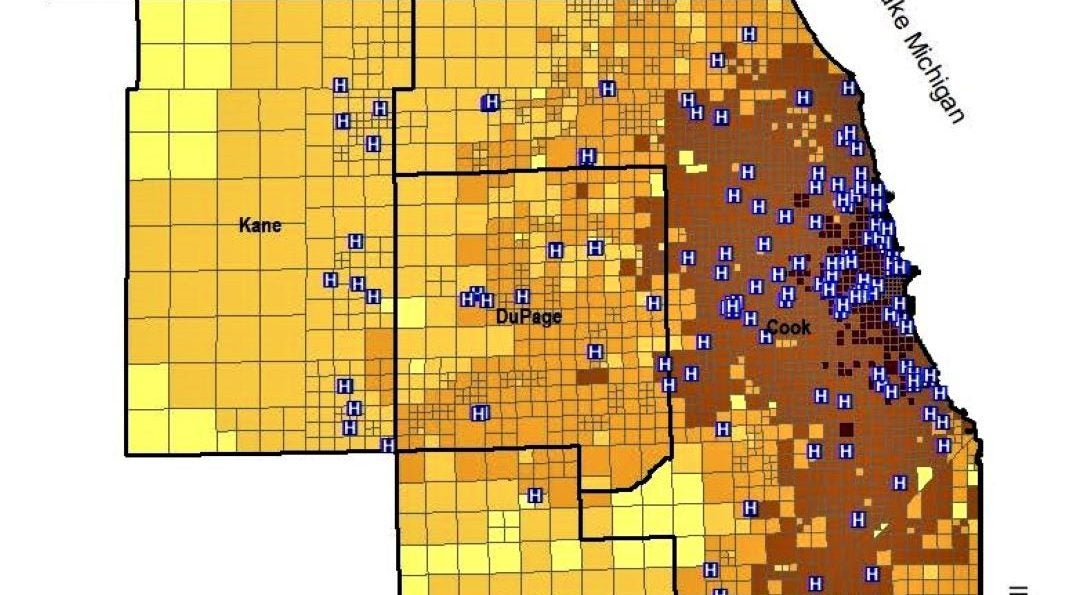Analysis of Supply and Demand for Public Transit Availability to Chicago-Area Healthcare Facilities Results in Next Steps on Improving Access for Disadvantaged

Study Completed by Urban Transportation Center at UIC Led to Methodologies That Can Apply to Other Markets
CHICAGO, December 2020 – Development of a framework for capturing the deficiencies of the transit system in connecting communities to healthcare facilities, as well as the development of supply side (availability) and demand side (accessibility) indices, are two of the primary contributions from a recent study to measure potential gaps affecting the ability of disadvantaged populations to get to healthcare facilities using public transportation.
The study, “Deficiencies in Public Transit Accessibility of Healthcare Facilities in Chicago,” was completed by the Urban Transportation Center at the University of Illinois at Chicago. Researchers employed two benchmarks for the analysis:
1) The demand side, which analyzed transit accessibility based the number of riders between origin destination pairs. Researchers created an index to measure the aggregate peak-period public transit accessibility potential to healthcare facilities for residential zones in the Chicago area.
2) The supply side, which gauged the availability of trains and buses in neighborhoods with healthcare facilities in Chicago and surrounding counties. This metric aggregated the frequency of service, hours of service, and the service coverage.
Three additional areas for improvement were mentioned in the study: Expand the number of hospitals and out-patient offices studied; refine the spatial resolution, or the linear measurement, of the demand and supply side indices; and, include the transit rider experience as another barometer to visualize the results.
As noted in the report, the long-term scope of work can lead to mobility improvements that can help society: “The welfare of the transportation disadvantaged may be at risk when access to healthcare for routine physicals, medical treatment and follow-ups is unnecessarily inhibited by poor public transit access. In urban areas with strong transit presence it is only prudent that further transit improvements target neighborhoods that lack such critical access.”
The methodologies developed by the researchers can be applied to other metropolitan markets nationwide by incorporating route and ridership data maintained by transportation service providers and local and regional planning organizations.
UTC Director Dr. P.S. Sriraj and Research Associate Professor Dr. Paul Metaxatos completed the project with assistance from student researchers Sneha Dattatraya Shet and Kewal Shah. Visit this link to read an abstract and access the complete report.
Funding was provided by the Metropolitan Transit Support Initiative (METSI), a project of the Illinois Department of Transportation, and the National Center for Transit Research at the University of South Florida.
The Urban Transportation Center at UIC is dedicated to conducting research and education and providing technical assistance on urban transportation planning, policy, operations, and management. The UTC is part of the College of Urban Planning and Public Affairs, a nationally-recognized innovator in education, research, and engagement in support of the nation’s cities and metropolitan areas. Learn more at www.utc.uic.edu.